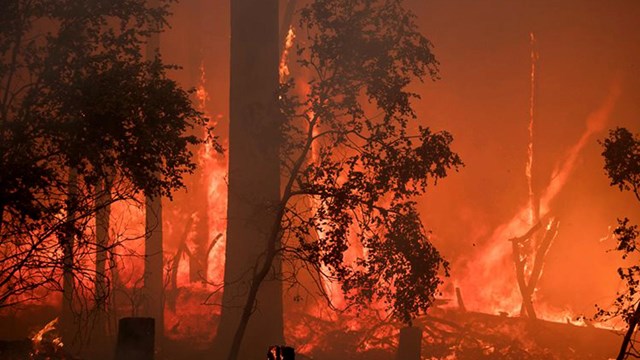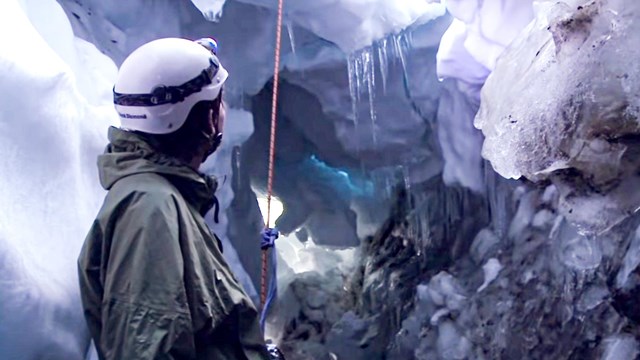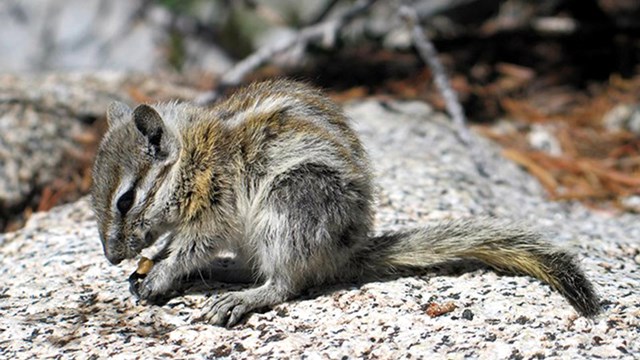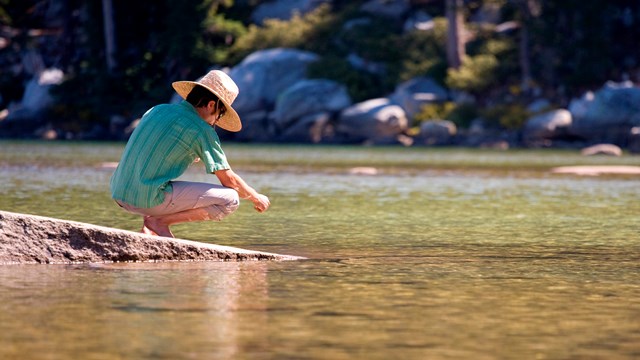
What does it mean to conserve and protect a place during a time of large-scale environmental change? Yosemite’s climate is changing. While changes in weather take place over minutes, hours, or days, changes in climate are measured over years, decades, or centuries. Weather data have been collected in Yosemite since 1895, giving us a window into long-term shifts in the park’s climate: 
These local patterns reflect larger shifts in the world’s climate. While Earth does go through natural warming and cooling cycles lasting tens of thousands of years, evidence shows that we are currently in a natural cooling period. The vast majority of scientists agree that recent changes in Earth’s climate are caused by human-produced greenhouse gases that trap heat close to the planet’s surface. Like a sleeping bag on a cold night, natural greenhouse gases perform the essential function of trapping enough heat in the atmosphere to support life on Earth. However, fossil fuel burning, deforestation, and large-scale farming have produced historically high levels of carbon dioxide, methane, and other greenhouse gases in the atmosphere—carbon dioxide levels today are at their highest in three million years. Without a major reduction in global greenhouse gas emissions, scientists project the following trends in Yosemite’s climate over the next century:
Climate change is already altering Yosemite’s ecosystems and the experience of visiting the park—but projecting the impacts of these changes is a complex science. Some natural cycles like wildfire, seasonally dry waterfalls, and tree death already take place but are exacerbated by climate change. Small shifts can set off domino effects; for instance, warming temperatures melt snow in the mountains and expose darker-colored ground that in turn absorbs more heat, leading to more snowmelt. Still other changes are driven by complex interactions between climate and fire management practices, natural drought, animal behavior, invasive species, and human use of the park. By studying the shifts we are already seeing in Yosemite, we can better understand the meaning of conservation in a time of change. What changes are we seeing?
Dwindling snowpack and dry waterfalls
Warmer spring temperatures may cause waterfalls to dry out early, while declining snowpack will have impacts far beyond park borders. 
Increased fire activity
As spring and summer temperatures rise and snowpack shrinks, fires have become more larger and more frequent throughout the western US. 
Shrinking glaciers
Yosemite's remnant glaciers are likely to vanish within decades, threatening summer and fall water supplies in the high Sierra. 
Tree die-offs
Warmer temperatures and intensifying droughts have made Yosemite's forests more vulnerable to large-scale attacks from insects. 
Shifting ecosystems
When climate change threatens a single species, effects can ripple across an entire interconnected ecosystem. 
Changes in visitor experience
Climate change may impact hikers, backpackers, and sightseers as summers heat up, high-elevation streams dry, and smoke becomes more common. What's next?National parks take on new roles in a time of large-scale change. They provide refuge to threatened species, protect critical water supplies, and serve as outdoor laboratories for scientists to study changes and impacts. They are also centers of teaching and learning, where millions of people come together to connect with the natural world, our history, and each other. 
How is the park responding?
Yosemite serves as a unique living laboratory for climate scientists and a center for teaching, learning, and connection. 
What can we do?
Simple choices can change the environmental impact of your trip to Yosemite. How can we shrink the carbon footprint we leave behind? 
Climate Change and the NPS
Learn more about the impacts of climate change in national parks and protected places across the country. Reports from national and international scientific panels:
Studies on the impacts of climate change in national parks:
Studies on the impacts of climate change in Yosemite and the surrounding area:
|
Last updated: May 1, 2024

